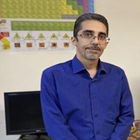


Section Collection Information
Dear Colleagues,
Development of high-performance and cost-effective energy storage technologies is an attractive subject of research today due to the growing energy demand and the necessity of providing it from clean and renewable sources. Switching from fossil-based energy to renewable energy offers the possibility of saving energy and simplifying energy distribution by sending electrons over the grid, or even generating the energy from renewable sources on-site, instead of transporting fossil-based fuels. However, intermittency of renewable energy sources such as sunlight, wind, and tide calls for energy storage to ensure efficient, continuous, reliable and affordable energy supplies. Electrochemical energy storage (EES) technologies along with materials development constitute essential elements to tackle the challenges to provide a stable supply of energy. Over the past decade, steady progress has been made towards this goal through the development of advanced electrode active materials. Thus, high power supercapacitors and high-energy rechargeable batteries have been developed. However, each of these stand-alone technologies by itself lacks the requisite qualities to meet the commercial needs that have been shaped by the consumption of fossil fuels. The introduction of advanced nanostructures for a new generation of energy storage systems has contributed to the blurring of the distinctions between batteries and supercapacitors based on two fundamentally different energy-storage mechanisms. However, increasing the energy content of supercapacitors to approach that of batteries, or improving the power performance of batteries to approach that of supercapacitors, usually comes at the cost of losses in power and/or cyclability of supercapacitors and deteriorations in the energy of batteries.
The main objective of this section is to play a leading role in establishing the research and development of various type electrochemical energy storage devices such as batteries and supercapacitors by using different types of nanostructured electroactive materials. However, considering its interdisciplinary structure and potential impact to scientific and technological development in energy storage systems, the goal of the section is to publish research articles/reviews supporting the experimental and theoretical simulations advancement of “electrochemical energy storage devices” based on nanostructured materials.
It is important to collect the experiences of " Research and development of electrochemical energy storage materials ". Seminal research articles and reviews in this area of study are welcome.
We look forward to receiving your contributions.
Dr. Surjit Sahoo
Section Editor


